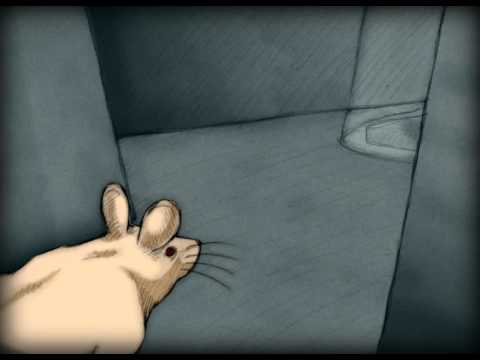Flash fiction or narrative flash is usually fiction that falls under 1000 words. You may have heard it called “micro” or “sudden” when under 500 words or less. Flash can be six words, like Hemingway’s “For sale…,” or a much larger word count, like some of the flash links below, but more importantly, short short fiction should be compressed until every word counts.
I do not mean take necessary components of your story away, such as details, like a vignette. A vignette is a smaller excerpt of a larger story, a cropping of a much bigger picture. Sometimes, so much is removed from a vignette, that the reader cannot ground themselves in the setting or connect emotionally with the characters. In flash fiction, the reader can see each necessary piece of the puzzle connect, from the hook to the “until” happens in the beginning. Or witness firsthand the ending section, the protagonist’s desires changing into the character’s actual change. Keep in mind: What the Protagonist wants is not always what he needs or receives in the end. Don’t make it easy for him either.
“How will I do this?” You may ask. Easy…the middle of your flash, the thing that drives the reader to keep on reading, the conflict. But in short short fiction’s case―brevity is always key.
In this class, we will write wonderful stories that are vast in meaning, but we will squeeze every word and witness the power of small. You may have heard the old saying, “Less is more,” but never in your writing did you witness this beauty as in the perfectly completed flash fiction piece. I hope above I gave you the components to make a good go at it. I promise that I can make you discover the rare beauty in brevity in your writing.
Are you up for the challenge?
It will be difficult at first to “kill your darlings,” but I guarantee that keeping an open mind will open up great opportunities for discovery in your short short fiction.
What Happens in Larger Works of Fiction as Opposed to Flash
The following Freytag’s [frī-täk] pyramid (below) illustrates what we consider to be a full narrative arc: exposition, inciting event, rising action, climax, falling action, resolution and denouement. Notice how the conflict in this pyramid focuses on the internal conflict of character vs. self. In literary fiction, the protagonist’s journey will root in this character vs. self inner conflict. You will have various other conflicts, yes: protagonist versus antagonist (external conflict) and many more, but in literary fiction, the main conflict will settle internally. We are not as interested in the external parameters, except in how these external conflicts further inform the internal conflict of character vs. self. A good example is to consider a literary story arc versus a formulaic story arc. In a literary arc, we are more interested in how the protagonist navigates situations and comes to terms, internally, emotionally, intellectually with these situations. In a formulaic arc, such as a romance arc, we end up following the he versus she arc in an externalized format including the “meet,” the “sex,” and the “breakup” or confirmation of relationship and so on. In a formulaic crime arc, we follow closely the “whodunit” paradigm, trying to figure the external conflict of one character versus another character, or rather, the detective versus the perpetrator, etc. In this course, we will focus on the internal conflict approach to writing character-based fiction.
Also note, below, the “denouement.” The denouement is the “resonance” of the narrative. The ending resonance of the narrative should be planted prior to the ending resolution or last line of your narrative, so that when the reader comes to the last line, the reader is already sensing a cyclical resonance, or to put it another way, when the reader reads the last paragraph and especially the last line, he or she should already be thinking about a larger resonance of the overall narrative as well as the beginning and middle and several moments within the earlier narrative. The denouement, at one time, would be written into the end of the narrative, which was a form that basically handheld the reader and “made sure” the reader felt and considered particular, authorial intentions. Since the Modernists, the denouement has securely taken a reader-focused form, where the author is not force-feeding this resonance to the reader, but rather, more subtly suggesting and allowing the reader to come to his or her own denouement, which is arguably the more connective and artful form of denouement and resonance. This Modernist style as well as this sense of cyclical closure will create in your reader a denouement or resonance that encourages the reader to revisit earlier moments in your narrative, and perhaps will encourage the reader to read the work again while engaging personally. Essentially, you want your reader to want to read your narrative more than once. You also want your reader to invest personal experience, comparisons and so on, as he or she is reading more than once. This is, arguably, how particular narratives gain following. When a narrative encourages the reader to return to it again and again, while also encouraging the reader to feel as though they are comparing self to narrative, then you have a narrative that will be more connective, effective and lasting. In poetry and short short fiction, this inspiration to reread the narrative is essential. Truthfully, all short stories should be read more than once as a rule. Novels, too, but this is less followed with novels and short stories. Poetry and short short stories, however, are built on this expectation that a reader will read again and again so to ascertain more and more subtexts.
In a longer short story, novella or novel, the pyramid or narrative arc will include all the setting, character and conflict details that provide the reader a fully encompassing experience.
So why, you may be asking, would someone read flash fiction?
Why would anyone read a form that leaves out some of these details, perhaps most of these details? There are many answers to this question, but the one I like best is that flash fiction when written well, precisely, with brevity and virtuosity, is as resonant as a perfectly formed poem, but it is prosaic, accessible, less built on metaphor than a poem, though, perhaps more so than a short story. The narrative voice is accessible and it forms frame, mood and tone, characters and conflict, but it is doing something that a longer work does not do as well. Flash fiction allows the reader a great deal of imaginative and exploratory room within the narrative. For readers who like room to explore within a narrative, room to stretch intellect and artistry, flash fiction can be a mental playground like no other prosaic form. As a writer of flash fiction, the key is giving just the right amount of strategic and precise detail to form this playground for the reader. Just as a child will become bored with a playground too familiar and full of rusty old equipment, or be overwhelmed with too much equipment, so can the reader. Finding the perfect balance will let the reader play and create and then return for more because this form is less about writers showing their geniuses and more about writers who can provide structure and room for their readers to exercise their own emotions and intellects.
If I still haven’t convinced you, consider this. Even if you are a diehard long form writer, and you simply thought you’d try this flash thing everyone is talking about, imagine how much richer and complete your chapters and scenes will be when you approach them as little works all their own, within the larger context of the overall narrative frame. Writing and practicing flash fiction will make you more aware of your scene and chapter work within the larger work.
And for those of you who are already in love with the flash form. Welcome. Now, let’s stretch your talents and see if we can get you writing some new stories!
Reading Assignments
“Seven in the Morning,” by Max Ruback: http://www.smokelong.com/flash/4706.asp
“The Mime and His Dog,” by Steven Douglas Gullion: http://smokelong.com/flash/stevendouglasgullion22.asp
(More than one soft scene but discusses drawing a house for storytelling like our prompt for the week) “216 East Boalt,” by Jeannie Vanasco, http://www.smokelong.com/216-east-boalt/
Discussion Assignment | What Concerns You Most About Writing Short Short Fiction?
Below, in the Discussion and Comments area, describe your biggest concern about writing short short fiction. Perhaps it is the form altogether. Or maybe you are concerned about a particular craft area. What is your biggest concern? Take time to engage with your course peers and discuss your concerns. You may find you are not alone.
Writing Assignment | Small Spaces, Big Memories
Take a piece of scrap paper or napkin. Draw a dwelling on it with a pen or pencil (it could be your childhood home or an old place of work, but please keep it fictional for now). Take a moment to fill in the details: The individual rooms, the basic furniture layout, maybe a door or two for a closet, a bathroom. This shouldn’t take very long, just a rough sketch of the levels in the dwelling and a few walls and labels. Now pick a room in this dwelling (maybe one of the smaller rooms―if you want to stick with the Kafka theme). Now write a short short fiction about this room with the following formula to get you started:
A. Protagonist of Your Choosing
+ B. Antagonist the Protagonist is Avoiding
= C. Odd Confrontation
This will be a one-setting narrative flash. You only have 500 words to play with for this first assignment. This lesson is to show me what you can do with the hints of flash construction I spoke about in my intro and the information you took away from the lecture on longer fiction versus flash fiction above. Guidelines are as follows (you do not have to submit the drawing. The drawing is what we workshop leaders/professors call a larger “prompt” to get you thinking about your compressed story).
Will you be able to fit the deeper meaning of your setting into the smaller space? Will you be able to defamiliarize tired themes?


